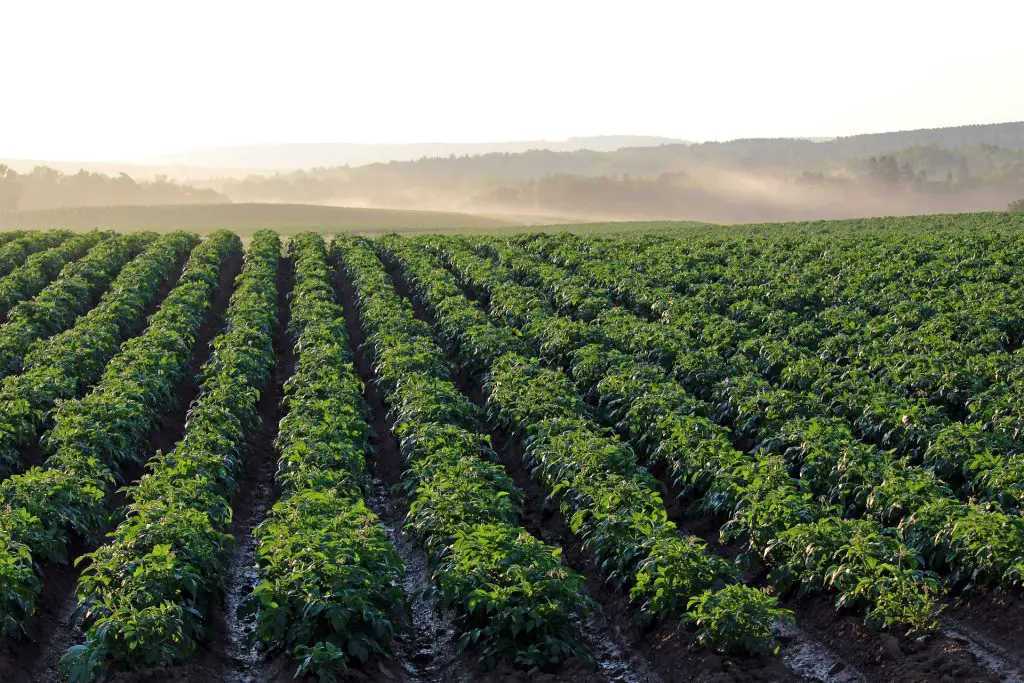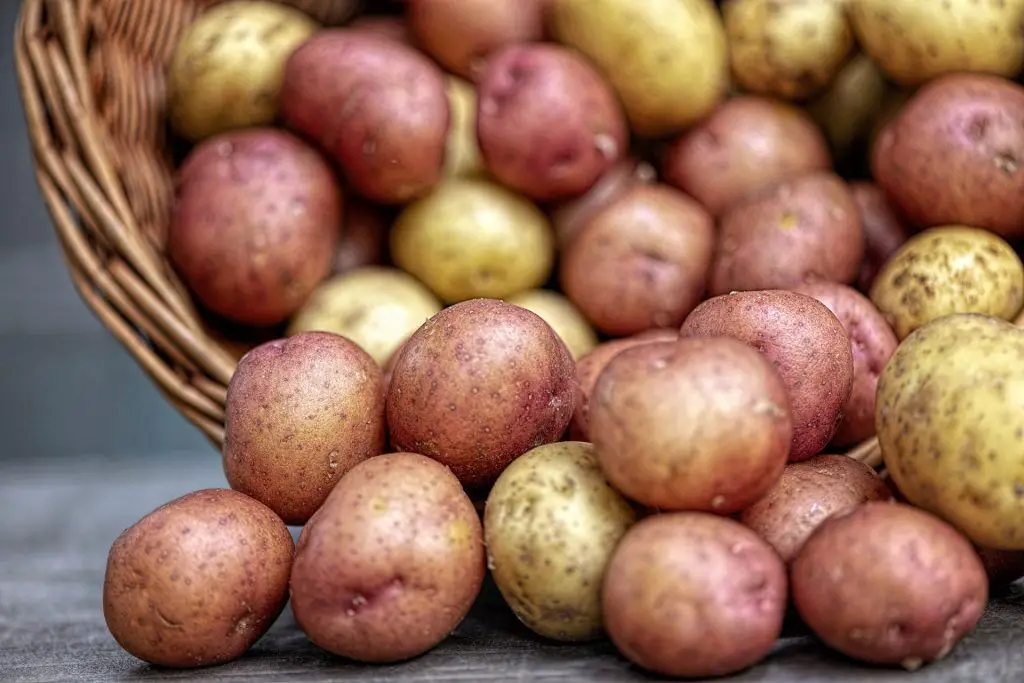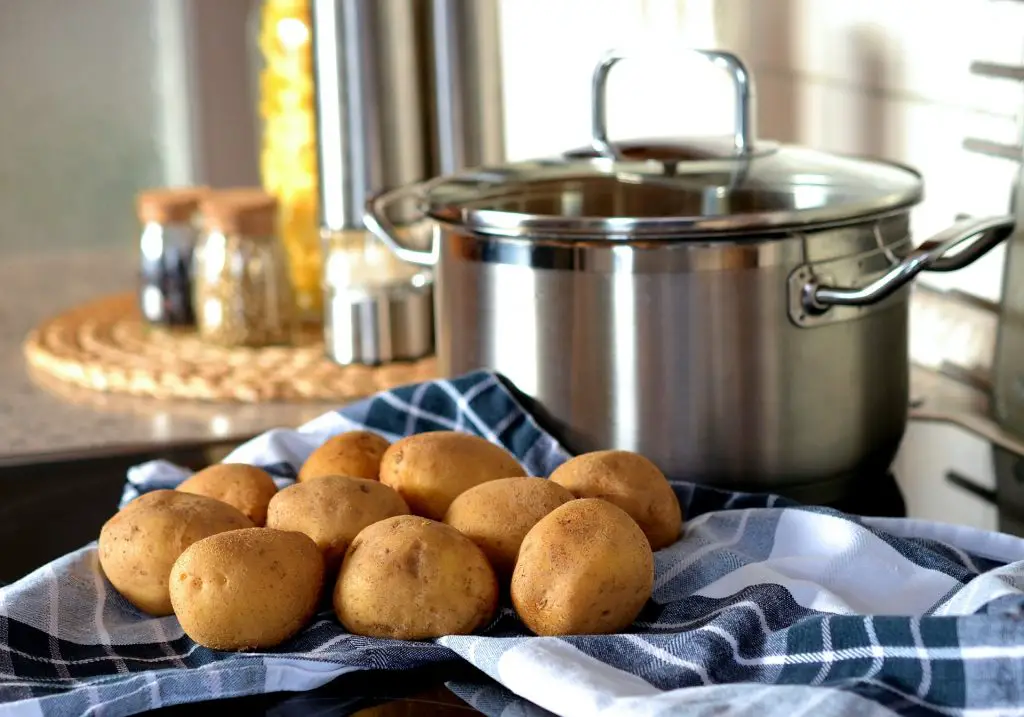Can You Plant Seed Potatoes In The Fall? Potatoes are one of the most widely eaten vegetables in the world because they are extremely easy to grow and produce a massive harvest. Traditionally potatoes are generally planted in mid-spring for a summer harvest. However, if you want to extend the season can you plant potatoes in the fall?
Seed potatoes can be grown in the fall though the degree of success that you will have will be greatly dependent upon the region in which you live. Potatoes are frost-sensitive plants that need at least 10 to12 weeks to produce a reasonable harvest of early potatoes. This means that you need to plant the potatoes right at the start of Autumn and protect the plants from frost throughout the fall to get a harvest.
If you are planning to produce from potatoes you will need to plant in midsummer at the absolute latest because main crop potatoes take between 16 and 20 weeks to produce their full yield.
For potatoes that are being grown in the fall, it will be necessary to provide protection from the elements through this period which can be done either by growing the plants in a grow bag that can be brought into a frost-free area such as a greenhouse or using a row covers to protect the plants outdoors.
However, if you live in a region that can get temperatures below freezing at this time of year the only real option is to grow them indoors in a heated environment because no amount of protection outside is going to allow the potatoes to grow.

If you are considering planting them outdoors we would suggest that purchasing a row cover would be an absolute must. The product that we recommend is the Growsun Garden Tunnel because it is relatively tall. This is important because the potato plants can get up to 2 ft tall.
Additionally, it has long hoops that can be pegged deeply into the ground ensuring that it is not affected by wind. To see the latest price on Amazon click here.
How To Maximize Your Yield
As the conditions in the fall are not as favorable as other times of the year you really need to take every advantage to ensure you get the best possible result. As such this is what we would recommend that you do to ensure that you maximize the yield.
The first step would be to chit the potatoes as this will help to get the plant off to the best possible start. For those that do not know what chitting is it is the process of exposing the potato tubers to light for a couple of weeks which will result in shoots being formed.
This process is somewhat controversial among gardeners with many people arguing that chitting does not improve the yield while others swear by it. Academic research looking into the effect of chitting have shown that it does have a substantial effect on yield when are harvesting early potatoes with the yields being significantly higher. However, the advantage gained by chitting reduces as the date of harvest extends to later in the season. If the potatoes are allowed to reach full maturity there is no significant difference in the yield between chitted and unchitted potatoes.
However, if planting potatoes in the Autumn is a last-minute decision then chitting will not help you and you are better off to simply plant the potatoes as soon as possible. Click here to read more about chitting potatoes.

The next important thing that you can do is ensure that you mound up the soil around the potato stems as they appear as this will encourage a greater number of tubers to be produced. Additionally, the soil around the stems will also insulate the stems from cooler wins which will also accelerate the growth.
The other important factor is to try and increase the temperature around the plants for as long as possible by applying protection to the plants in the form of a row cover as early as possible in the season. This will encourage the rate of growth to increase giving you a greater harvest. For those people that are using grow bags it may be necessary to bring the potatoes into the greenhouse relatively early.
The other thing that you can consider is the variety of potato that you grow. Certain varieties will perform a little bit better than others and we have an article that covers a study done by the RHS which looked at a range of different potato varieties. Click here for more information.
However, at that time of year it may be difficult to get hold of some of the varieties as the majority of stores will not stock them at that stage. However, if you need to purchase seed potatoes visit seeds now as they have a wide range of seed potatoes.
How To Grow Potatoes
As mentioned previously potatoes are relatively easy to grow. To start them off dig a trench approximately 1 foot deep and place a layer of compost on the base of the trench. Plant the seed potatoes approximately 1 ft apart and then cover them over with soil. If you are short on seed potatoes you can also cut them and half and plant them.
A study that we did a few years ago on cutting seed potatoes in half showed that there was some gain in the size of yield that could be achieved by doing this. To read more about this click here.

If you are growing potatoes in a grow bag start by putting a layer of soil approximately 6 inches deep in the base of the bag. Place the seed potatoes into the mixture and then cover them over with soil.
In 2 to 4 weeks the tubers will begin to sprout. Irrespective of whether you are growing potatoes in the garden or in a grow bag you should begin to mound up the soil around these new stems ensuring that there was always a small amount of growth at the top of the mound to allow the potato to continue to photosynthesize. To read more about this click here.
The process of mounding may need to be done a couple of times during the season as the growth of the plant progresses. When the plant flowers it is approaching the time where you can consider harvesting. If you have multiple plants or grow bags it is advisable to harvest only one rather than the whole lot to see how the plant is going.
If you are growing them in the fall there will be a limited time that you can leave them for before the weather gets too cold. However, as a general rule the longer you can leave the potatoes the greater the year that you were going to get.
In normal circumstances, you can typically expect to get around 1 lb of potatoes per potato in a grow bag and 4 lbs, if it is a main crop potato planted in the garden. Given that the weather conditions are not going to be favorable you can expect the yield to be a little less than that.
I hope you found this article useful and you have great success with your potatoes. If you have any additional questions or comments please leave them below.
Relevant Articles
Are Potatoes Legumes? If Not What Are They?
Can You Compost Potatoes? Or Will They Start Growing?
Are Potatoes A Root Vegetable?

